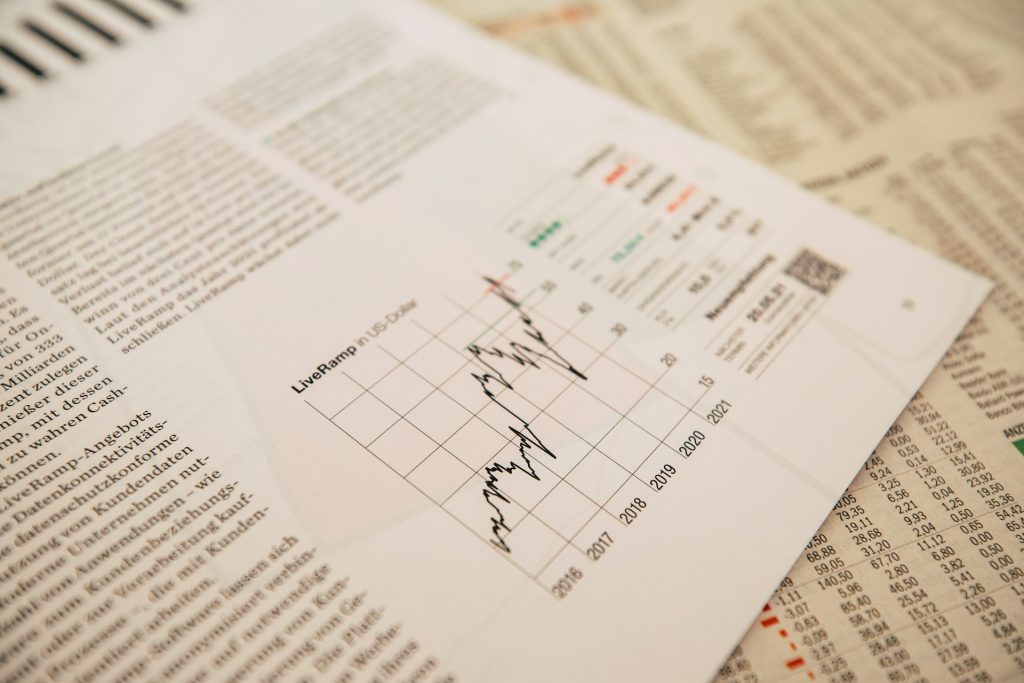
The Impact of Monetary Policy on Interest Rates and Monetary Exchange in Macroeconomics is an important factor when it comes to making investment decisions. Understanding the relationship between monetary policy, interest rates, and the monetary exchange rate is essential for investors.
Monetary policy is the set of measures taken by a central bank to manage the economy through the manipulation of money supply, interest rates, and other financial instruments.
A central bank may choose to keep the money supply relatively tight by raising interest rates, in order to slow inflation, or it may increase the money supply by lowering interest rates in order to encourage economic growth.
The way in which monetary policy affects interest rates and monetary exchange rates depends on the economic climate and the actions taken by the central bank.
What is the link between interest and exchange rates?
The link between interest rates and exchange rates is complex. In general, when a central bank raises interest rates, investment capital flows toward the country, leading to an increase in the value of its currency.
This increase in the value of currency makes imports more expensive, which can lead to higher inflation, leading the central bank to raise interest rates further. Conversely, when a central bank lowers interest rates, the value of its currency tends to fall relative to other currencies, making imports cheaper and leading to a decrease in inflation.
What is the most important monetary policy?
Monetary policy refers to the actions taken by a central bank or monetary authority to manage and control a country’s money supply and interest rates in order to achieve certain economic objectives. The most important monetary policy often varies depending on the economic conditions and goals of a particular country. However, one of the key monetary policy tools used by central banks around the world is the adjustment of interest rates.
Interest rates have a significant impact on various aspects of an economy, including consumption, investment, and inflation. The central bank can raise or lower interest rates to influence borrowing costs, spending patterns, and overall economic activity. By increasing interest rates, the central bank can curb inflationary pressures and reduce excessive borrowing, while lowering interest rates can stimulate economic growth and encourage borrowing and investment.
Apart from interest rate adjustments, other important monetary policy measures include open market operations (buying or selling government securities to control the money supply), reserve requirements (the amount of cash banks must hold in reserve), and liquidity support to banks and financial institutions during times of crisis.
It’s important to note that the effectiveness and importance of specific monetary policy tools can vary depending on the country’s economic conditions, such as inflation levels, unemployment rates, and overall economic stability. Therefore, the most important monetary policy measures can differ across countries and time periods. Central banks continually assess the economic landscape and adjust their policies accordingly to achieve their goals, such as price stability, full employment, and sustainable economic growth.
Impact of monetary policy on monetary exchange rates
The impact of monetary policy on monetary exchange rates is also determined by the movements of global capital. When global capital is invested in a currency, its value usually rises relative to others, resulting in an appreciation of the currency. Conversely, when large amounts of foreign capital leave a country, its currency tends to depreciate.
In order to interpret macroeconomic data related to monetary policy, investors need to be able to identify the indicators of economic stability. For example, changes in GDP, unemployment rate, and inflation all have an impact on monetary policy. Similarly, changes in the target interest rate set by the central bank, which is the rate at which it lends money to commercial banks, affect both the money supply and exchange rates.
Other factors can also impact the relationship between monetary policy and exchange rates, including inflation expectations, global economic conditions, and market sentiment. It’s important to consider these factors when interpreting the impact of monetary policy on exchange rates.
Overall, the relationship between monetary policy and exchange rates is complex, and there is no one-size-fits-all answer. However, by monitoring changes in monetary policy and analyzing economic data, investors and policymakers can gain insights into how monetary policy may impact exchange rates in the short and long term.
How does monetary policy impact the exchange rate?
Overall, the relationship between monetary policy and the exchange rate is complex and depends on a variety of factors including global economic conditions, inflation expectations, and market sentiment.
It is also important to keep an eye on exchange rates, as they are affected by monetary policy. A country’s exchange rate is determined by its balance of payments, which is a measure of the amount of money entering and leaving the country. When a country has a large trade deficit, it is likely to experience capital outflows, resulting in a weaker exchange rate. Conversely, when a country has a large trade surplus, its currency is likely to appreciate.
On the other hand, when a central bank reduces interest rates, it can make a country’s currency less attractive to foreign investors, leading to a depreciation of the exchange rate. A weaker currency can make exports cheaper and more competitive, potentially boosting economic growth.
In addition to interest rates, other monetary policy tools can also impact the exchange rate. For example, if a central bank engages in quantitative easing by buying government bonds, it increases the supply of money in the economy, which can lead to a depreciation of the exchange rate.
What will happen to interest rates in 2023?
The RBI’s Fiscal Policy Statement for 2023–24 takes a cautious method, stressing the need to strike a balance between achieving inflation targets and fostering economic growth. The MPC will keep an eye on how the outlook for both inflation and growth is changing and modify policy as necessary in upcoming meetings.
Impact of market forces
Finally, investors should consider the market forces that influence exchange rates. The demand for a currency increases when investors expect it to appreciate and decreases when they expect it to depreciate. Government intervention and currency speculation can also influence exchange rates.
How to interpret data related to monetary policy and exchange rates
To interpret the data related to monetary policy and exchange rates, investors should keep an eye on changes in the policy targets set by central banks, the growth rate of economies, foreign capital flows, and changes in demand for a particular currency. For example, if a central bank raises its target interest rate, investors can expect the value of the affected currency to appreciate. Similarly, if foreign capital begins to flow into a country, the demand for its currency will likely increase, leading to a stronger exchange rate.
Investors should also be aware of the effects of government intervention. Interventions, such as currency pegs and the implementation of capital controls, can limit the amount of foreign capital entering a country, affecting the exchange rate. Similarly, currency speculation can drive up the demand for a currency and lead to appreciation.
What impact does monetary policy have on the real rate of interest?
Monetary policy can have a significant impact on the real rate of interest. The real interest rate is the nominal interest rate adjusted for inflation, representing the return on an investment after accounting for changes in purchasing power. Central banks use monetary policy tools to influence interest rates and, consequently, the real rate of interest. Here are some of the main channels through which monetary policy affects the real rate:
- Policy rates: Central banks typically set policy rates, such as the federal funds rate in the United States. By adjusting these rates, central banks can influence short-term interest rates in the economy. When a central bank raises policy rates, it becomes more expensive for banks to borrow money, leading to higher lending rates in the economy. This increase in borrowing costs can dampen consumption and investment, reducing aggregate demand and potentially lowering inflation. Consequently, the real rate of interest may rise as the inflation component decreases.
- Inflation expectations: Monetary policy actions, such as changes in interest rates or communication from central banks, can affect inflation expectations. If the central bank signals a tightening of monetary policy to combat inflationary pressures, it may lead to lower inflation expectations among households and businesses. Lower inflation expectations can influence long-term interest rates, which affect the real rate of interest. If inflation expectations decline, long-term interest rates may decrease, reducing the real rate of interest.
- Money supply: Central banks also have the ability to influence the money supply in the economy through open market operations, reserve requirements, and other tools. When the central bank increases the money supply, it can potentially stimulate aggregate demand, leading to higher inflationary pressures. As inflation increases, lenders may demand higher nominal interest rates to compensate for the eroding value of money over time. Consequently, the real rate of interest may rise.
- Exchange rates: Changes in monetary policy can affect exchange rates, which, in turn, influence the real rate of interest. When a central bank tightens monetary policy, it can attract capital from foreign investors seeking higher returns. This increased demand for domestic currency can lead to an appreciation of the exchange rate, which can lower import prices and potentially reduce inflationary pressures. A stronger currency can also lower the cost of imported capital goods, leading to higher productivity and economic growth. These factors can contribute to a lower real rate of interest.
It’s important to note that the relationship between monetary policy and the real rate of interest is complex and can be influenced by various economic factors, including the state of the economy, fiscal policy, and global economic conditions. Additionally, the transmission of monetary policy through the financial system and the overall effectiveness of policy actions can also impact the real rate of interest.
What monetary policy increases interest rates?
One monetary policy tool that can be used to increase interest rates is called contractionary monetary policy. This policy is typically implemented by a central bank to slow down economic growth and control inflation. The central bank can increase interest rates through various means, including:
- Open Market Operations: The central bank sells government securities (such as treasury bonds) in the open market. This reduces the money supply in the economy and increases demand for these securities, which in turn leads to higher interest rates.
- Reserve Requirements: The central bank can increase the reserve requirements for commercial banks. This means that banks must hold a higher percentage of their deposits as reserves, reducing the amount of money available for lending. With less money to lend, banks may raise interest rates to compensate for the decreased liquidity.
- Discount Rate: The central bank can increase the discount rate, which is the interest rate charged to commercial banks when they borrow funds from the central bank. When the discount rate is raised, borrowing becomes more expensive for banks, leading to higher interest rates in the overall lending market.
These measures are used to reduce the availability of credit in the economy, making borrowing more expensive. As a result, businesses and individuals are likely to reduce their borrowing and spending, which can help slow down inflationary pressures. Higher interest rates also make saving more attractive, as individuals can earn higher returns on their savings, encouraging a shift towards saving and reducing consumption.

Summary
In summary, understanding the relationship between monetary policy, interest rates, and exchange rates is essential for investors. By monitoring macroeconomic data and market forces, investors can better interpret related data and make more informed investment decisions.
In addition, investors should also be aware of the impact of geopolitical events, such as political unrest, trade wars, and natural disasters, on exchange rates. These events can have a significant impact on currency markets, and investors should factor them into their investment decisions.
Finally, investors should also be mindful of the risks associated with investing in foreign currencies, such as exchange rate volatility, counterparty risk, and liquidity risk. By understanding the complexities of currency exchange, investors can protect their investments and make better investment decisions.
Check out our articles to read out more impact of Monetary Policy on Economic Growth and Price Stability.




[…] specific economic objectives. It impacts economic growth by controlling the supply of money and influencing interest rates. Financial institutions, such as commercial banks, play a critical role in the transmission of […]